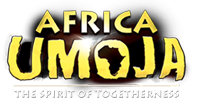FIVE STARS – ‘Africa Umoja’ at the National Theatre
‘Africa Umoja’ at the National Theatre
The energy of Africa Umoja virtually leapt off the stage. At times, the performer’s enthusiasm was nearly matched by the shout-outs, ululations, whistling, foot stomping, singing, arm-waving and clapping emanating from the audience. Washington is fortunate to have another taste of the world-renowned production. This year’s tour is especially meaningful as it celebrates 20 years of freedom and democracy in South Africa.
ORIGINAL WRITE-UP: http://dcmetrotheaterarts.com/2014/11/07/africa-umoja-national-theatre/
Africa Umoja celebrates the uniting power of music during South Africa’s modern history. Creators Todd Twala and Thembi Nyandeni, and Producer Joe Theron, have made an extraordinary set of song and dance far more meaningful than a generalized cultural exhibition. Historical narrative by Penuel Bhekizitha Ndaba, as Hope, ties changes in South Africa, including migration, apartheid and an increasingly wider world view, to the evolution from traditional tribal music and dance through the development of currently popular music and dance.
Don’t miss your chance to see this thrilling and insightful production before its last performance the evening of Saturday, November 8. The Saturday matinee is a perfect time for families to take in the wonder that is Africa Umoja. Parents may want to note that there is contextually appropriate showing of breasts by a few of the many women on stage at the very beginning of the performance.
The opening song, “Bawo Tixo Somandla,” accompanies an introduction to village life. Todd Twala’s choreographic genius was evident in the smoothness with which a cast of over 30 wove several stories together through their dancing. One of the incredible sights was a long line of women performing the Venda snake dance while traveling as one around the stage.
The traditional dance of the Sangoma (shaman), the mind-blowing mastery of miners dancing in their gumboots, and the post hip-hop and twerking frenzy of dancing to Kwaito were testaments to her choreography and the dancers’ skills.
The first 10 minutes also foretold the vocal power, flexibility and grace in store. The soaring heights of gospel, the laments of village women and the percussive voices in tribal music and the soulful singing in nightclubs in Sophiatown showcased the depth and breadth of vocal talent in the ensemble.
Costume designer Thembi Nyandeni uses the evolution of dress to add another dimension to the story. The village women start the show by exhibiting their marital status through degrees of modesty. Unmarried girls were bare except for short grass skirts. After engagement, the young women cover their breasts. Once married, the woman covers her entire body including wearing a bib-like garment decorated with beads spelling out a message understood only by her husband. Attention to authenticity of time and place is evident through the evening. Since music and soccer are two dominating social forces, the appearance of soccer socks, along with other costume changes for the female dancers, made me chuckle
Each scene also carried unique delights. During the talent competitions at the Durban YMCA in the ’50’s, the emcee was particularly memorable in his portrayal of a loopy, jive-master who could have been a one man comedy show. Two marimba players stood out at the beginning of Act Two and several couples danced the heck out of a swing number in an illegal drinking venue called a Shebeen.
A counterpoint to the male experience in moving to the city for work in the ‘50s was the lamentations of women left in the villages for years with very little contact with their spouses. The women sang of how their lives have changed over the years including how the children have grown and changed — all out of sight, and possibly out of mind, of their spouses. This was one of the gentlest and one of my favorite sequences of the evening.
Another favorite showed the power Gospel music brought to the struggle for freedom from apartheid. A kiss of hope came packaged in “I Have A Dream,” written specifically for Ujoma by Alan Simon, as a tribute to Martin Luther King’s struggle in America during the height of the apartheid era in South Africa. The performers moved up and down the aisles, bringing everyone into the fold.
As the performance progresses, the audience tumbles through scene upon scene of life and music’s evolution in South Africa Though each scene was unique, they made perfect sense in the story arc. They also were strong enough to have stood alone.
Since this is truly an ensemble production, there was no evident lead singer, dancer, musician or actor. Everyone showed an range of talent that could adapt from the bawdiest singing and dancing that defied gravity and anatomic restrictions to the most reverent and restrained numbers. Each cast member seemed to do it all.
Luckily for local audiences, a six week delay in the performance schedule due to visa problems leaves tickets available for this short run of Africa Ujoma in DC. Don’t miss your chance to be entertained and informed.
Africa Umoja plays through tomorrow, November 8, 2014, at National Theatre – 1321 Pennsylvania Avenue, NW, Washington, DC. For tickets, call (800) 514-3849, or purchase them online.




